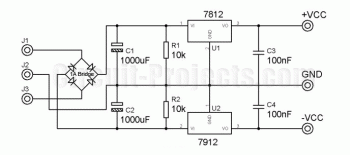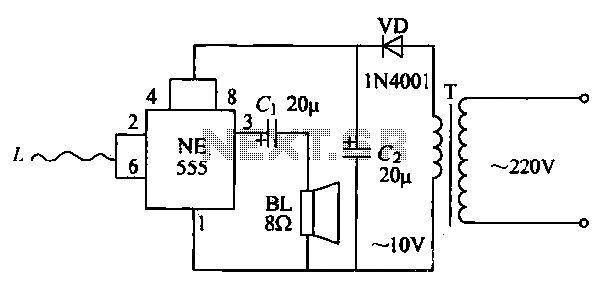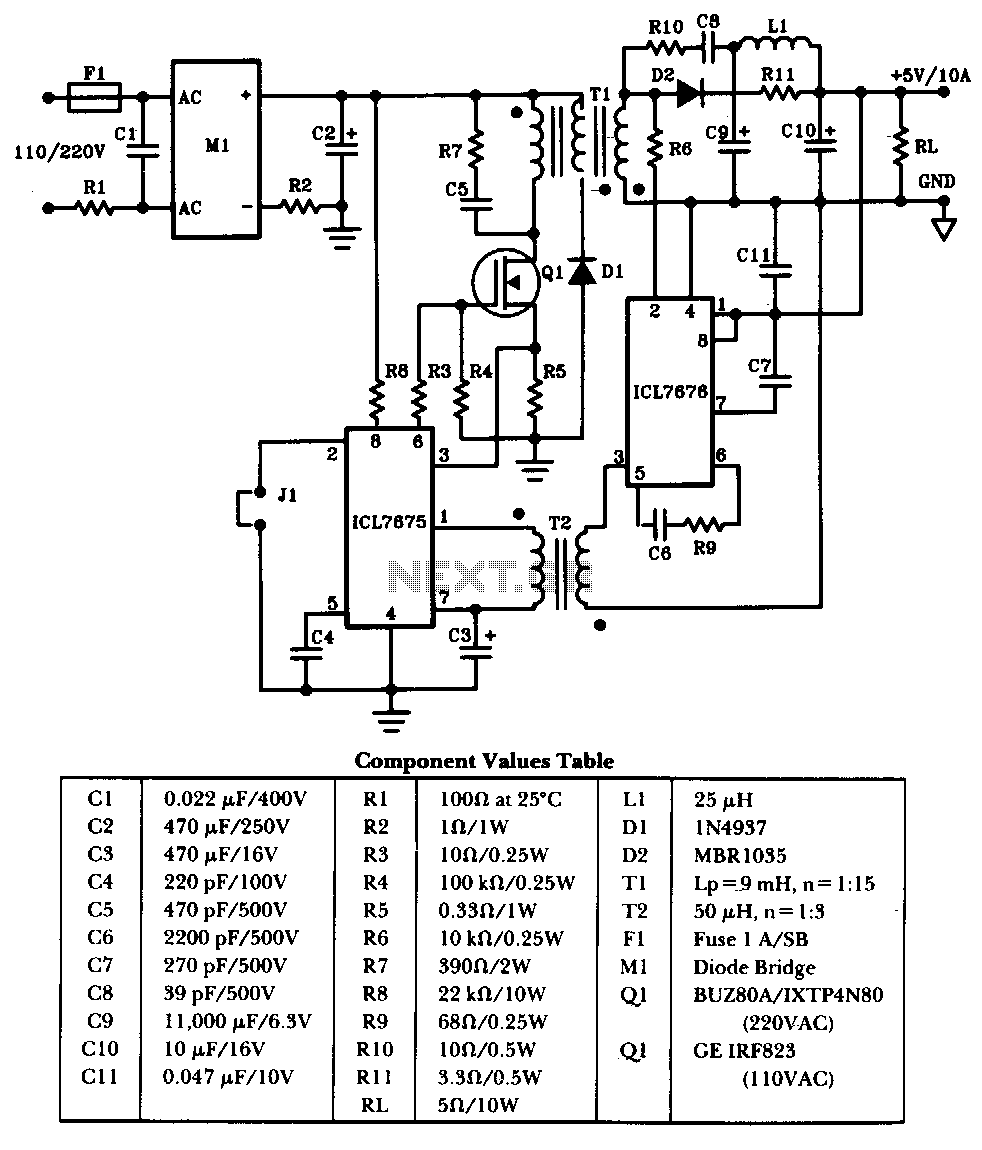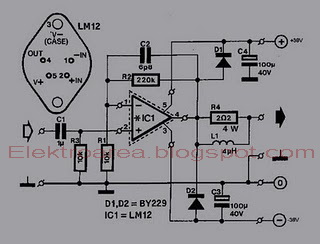
Dual Regulated Power Supply

A center tap transformer is required. For instance, to obtain a 12V output, connect J1 to the 15V transformer output, J2 to 0V, and J3 to another 15V.
A center tap transformer is a specialized transformer that has a secondary winding with a center tap, allowing for multiple output voltages. In this configuration, the center tap serves as a reference point, typically at 0V, which enables the generation of dual voltages from a single transformer.
For a typical application where a 12V output is required, the transformer should have a secondary winding rated for 30V (15V-0V-15V). In this case, J1 is connected to one end of the secondary winding (15V), J2 is connected to the center tap (0V), and J3 is connected to the other end of the secondary winding (another 15V).
This setup allows for the extraction of 12V across J1 and J2, or J2 and J3, depending on the load connection. The center tap provides a stable reference point, which is essential for various applications, including power supply circuits for amplifiers or other electronic devices.
When designing circuits with a center tap transformer, it is crucial to ensure that the transformer is rated for the required current and voltage specifications. Additionally, appropriate filtering and regulation may be needed on the output to achieve a stable and clean DC voltage, particularly if the load requires precise voltage levels or low ripple.You need center tap transformer. for example, if you need 12v output, you should connect J1 to 15v transformer output, J2 connected to 0v and J3 connected to another 15V. 🔗 External reference
A center tap transformer is a specialized transformer that has a secondary winding with a center tap, allowing for multiple output voltages. In this configuration, the center tap serves as a reference point, typically at 0V, which enables the generation of dual voltages from a single transformer.
For a typical application where a 12V output is required, the transformer should have a secondary winding rated for 30V (15V-0V-15V). In this case, J1 is connected to one end of the secondary winding (15V), J2 is connected to the center tap (0V), and J3 is connected to the other end of the secondary winding (another 15V).
This setup allows for the extraction of 12V across J1 and J2, or J2 and J3, depending on the load connection. The center tap provides a stable reference point, which is essential for various applications, including power supply circuits for amplifiers or other electronic devices.
When designing circuits with a center tap transformer, it is crucial to ensure that the transformer is rated for the required current and voltage specifications. Additionally, appropriate filtering and regulation may be needed on the output to achieve a stable and clean DC voltage, particularly if the load requires precise voltage levels or low ripple.You need center tap transformer. for example, if you need 12v output, you should connect J1 to 15v transformer output, J2 connected to 0v and J3 connected to another 15V. 🔗 External reference





